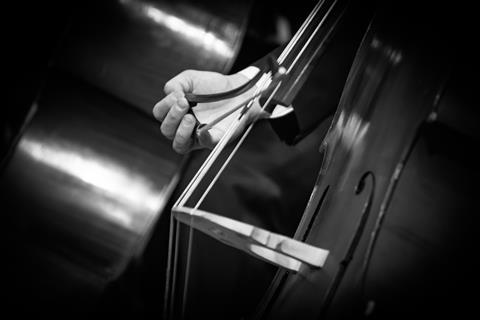Rodrigo Moro Martín, the London Symphony Orchestra’s new principal double bass, argues that the two tribes who favour French and German bow holds should coexist in perfect harmony

Discover more Featured Stories like this in The Strad Playing Hub
Read more premium content for subscribers here
Which is better, the French or the German bow hold? It’s a contentious question that can stir up a lot of feeling from the two camps and can even limit with which orchestras and where in the world a double bassist can perform.
There are some people who believe one bow hold offers more power, or the other more agility, or who are of the opinion that it’s just a matter of each hold offering different but equally valid qualities. I however believe that the two tribes – French and German – can coexist in peace.
I use a German bow and I have done so all my life, so the German bow hold is my preference, but this familiarity with my bowing ‘mother tongue’ is really the only reason I favour it. And I’ve been lucky to have both perspectives, because I started learning the double bass with a German bow teacher, then moved to a French bow teacher who didn’t change my hold, then finished my studies back with a German bow teacher, so I have learnt from both sides without having to alter the way I hold the bow myself.
How did we end up with two different bow holds on the double bass, and what is the reason for the geographical differences and preferences in orchestral sections today? Both grips seem to have been around more or less since the appearance of the double bass in the late 15th or early 16th century, one coming from the viola da gamba and one imitating the bow hold of the violin, viola or cello.
Read: The Viennese double bass: The long pattern
Read: Masterclass: Bow techniques for jazz bass
Discover more Featured Stories like this in The Strad Playing Hub
Read more premium content for subscribers here
Ironically, the bow hold that we now call German actually came out of Italy, from the hand of the double bass’s first virtuoso, Venice-born Domenico Dragonetti (1763–1846). This ‘underarm’ hold developed from the method of bowing the viola da gamba and violone. It spread from the north of Italy to the Austro-Hungarian empire, then Germany and some Eastern European countries, eventually giving rise to today’s German bow, with its wide frog.
The other, ‘overarm’ grip came later, from the hand of another Italian, the virtuoso Giovanni Bottesini (1821–1889). However it’s important to note that though Bottesini developed French bowing and concentrated more on this way of playing, he also talks about the underarm bow hold in his methods. The popularity of the French bow hold spread around the Mediterranean coast, particularly to France and Spain.
Some things are technically easier with one bow hold, and more natural with the other
From Spain it travelled to the US through a very important figure in the double bass world, the Catalan Anton Torello (1884–1960). Torello moved to the US in 1909, was appointed principal bass of the Philadelphia Orchestra in 1914, and in 1926 became the first double bass professor at the Curtis Institute of Music. Through his teaching he popularised the French bow hold technique that is seen in many US sections today.
While it is true that some things are technically easier with one bow, or feel more natural to play with the other, ultimately professional double bass players have to overcome these difficulties and play to the best of their abilities. I think it would never hurt to learn both methods, as it is always good to have some knowledge of what each bow hold is about, though it’s not strictly necessary.
I take up my role as principal bass of the London Symphony Orchestra in September 2023, where our section uses a mix of German and French bowing, and I think it works extremely well. It’s worth noting that LSO’s last two principals, Joel Quarrington and the late Rinat Ibragimov, both wonderful players, used German and French bow holds respectively. Ultimately, for a section to work well together, it has to be populated with good musicians, whichever grip they use – that’s the most important thing!
Read: 9 ways to develop a flexible bow hold
Read: Violin Bow Hold: No holds barred
Discover more Featured Stories like this in The Strad Playing Hub
Read more premium content for subscribers here
The number one source for playing and teaching books, guides, CDs, calendars and back issues of the magazine.
In The Best of Technique you’ll discover the top playing tips of the world’s leading string players and teachers. It’s packed full of exercises for students, plus examples from the standard repertoire to show you how to integrate the technique into your playing.
The Strad’s Masterclass series brings together the finest string players with some of the greatest string works ever written. Always one of our most popular sections, Masterclass has been an invaluable aid to aspiring soloists, chamber musicians and string teachers since the 1990s.
This year’s calendar celebrates the top instruments played by members of the Australian Chamber Orchestra, Melbourne Symphony, Australian String Quartet and some of the country’s greatest soloists.













































No comments yet